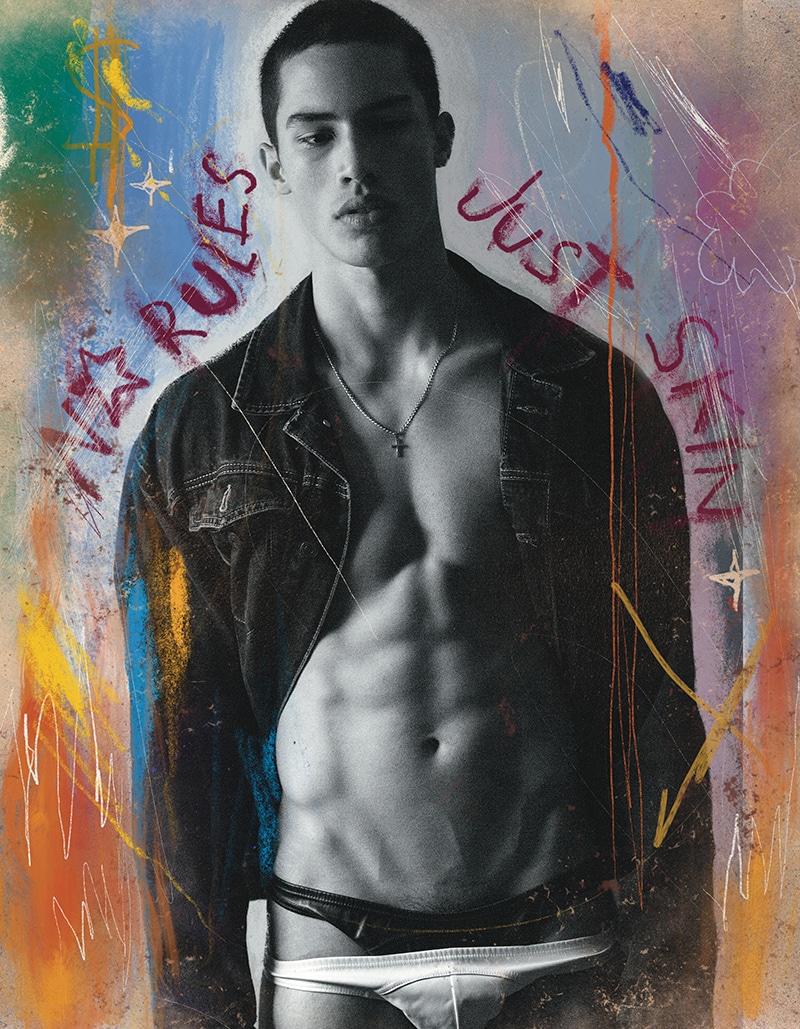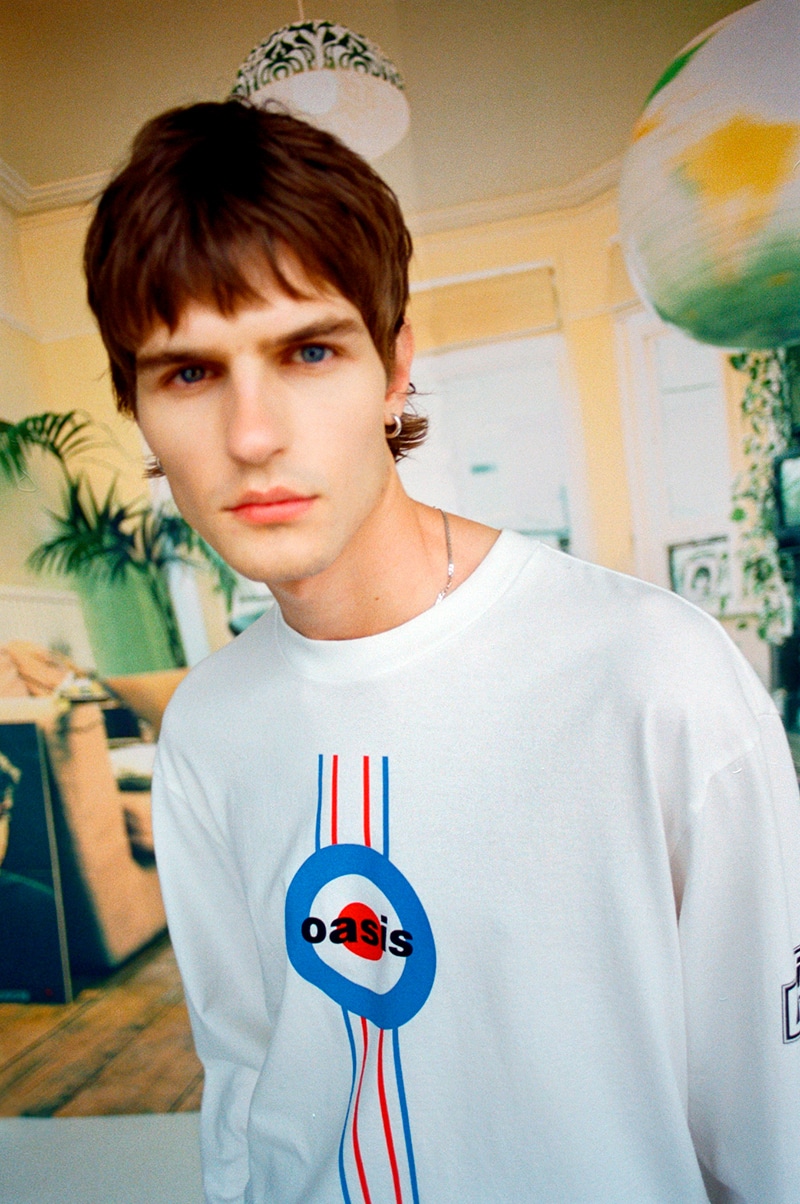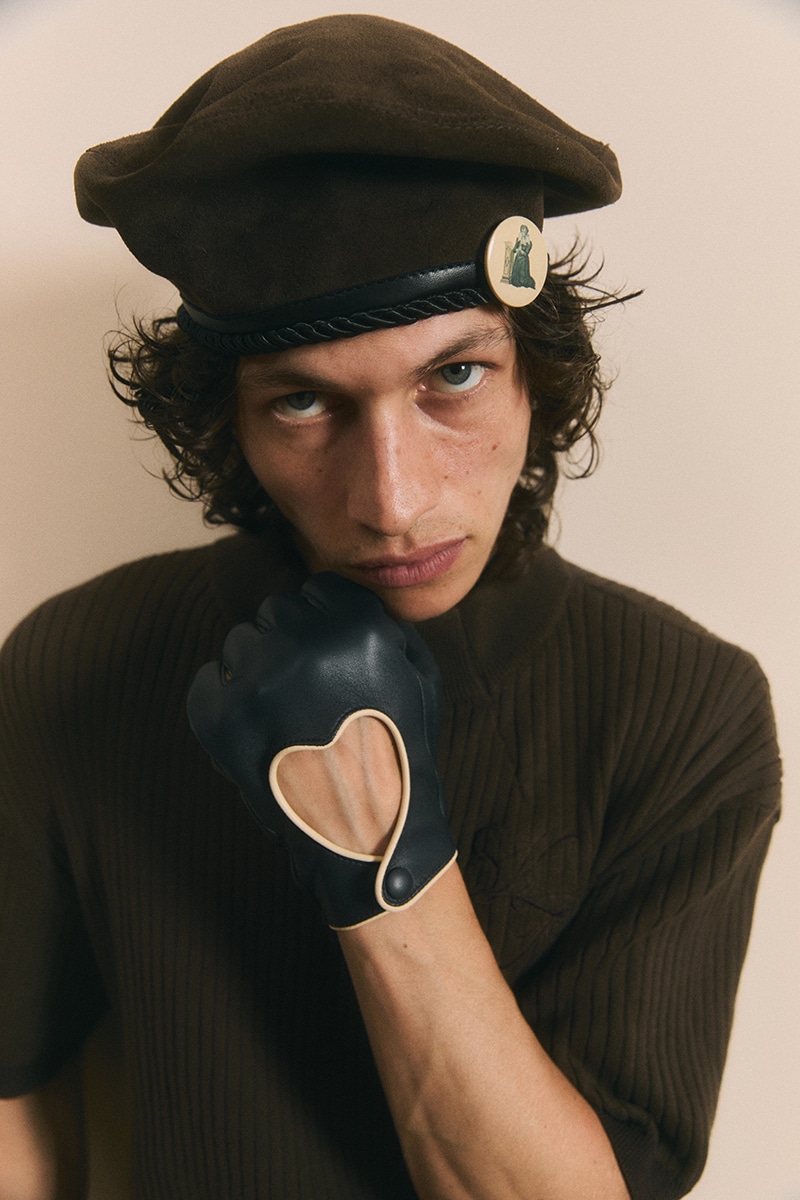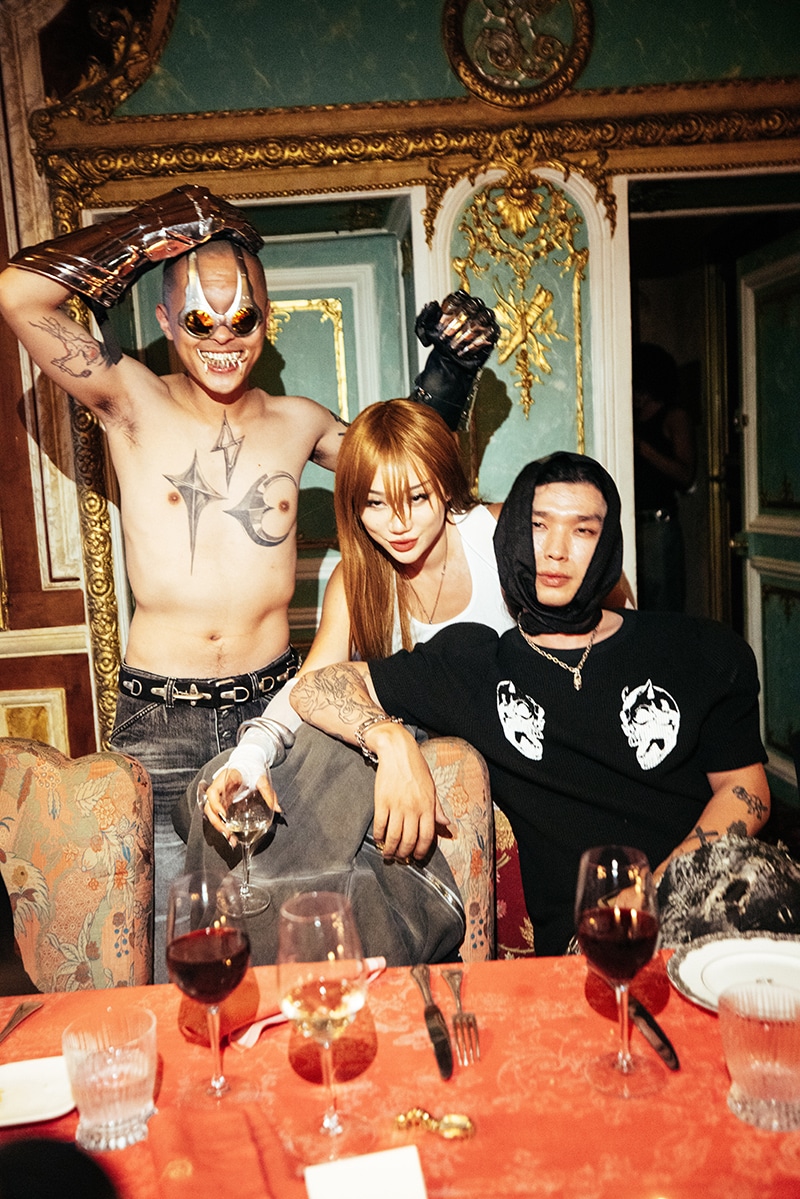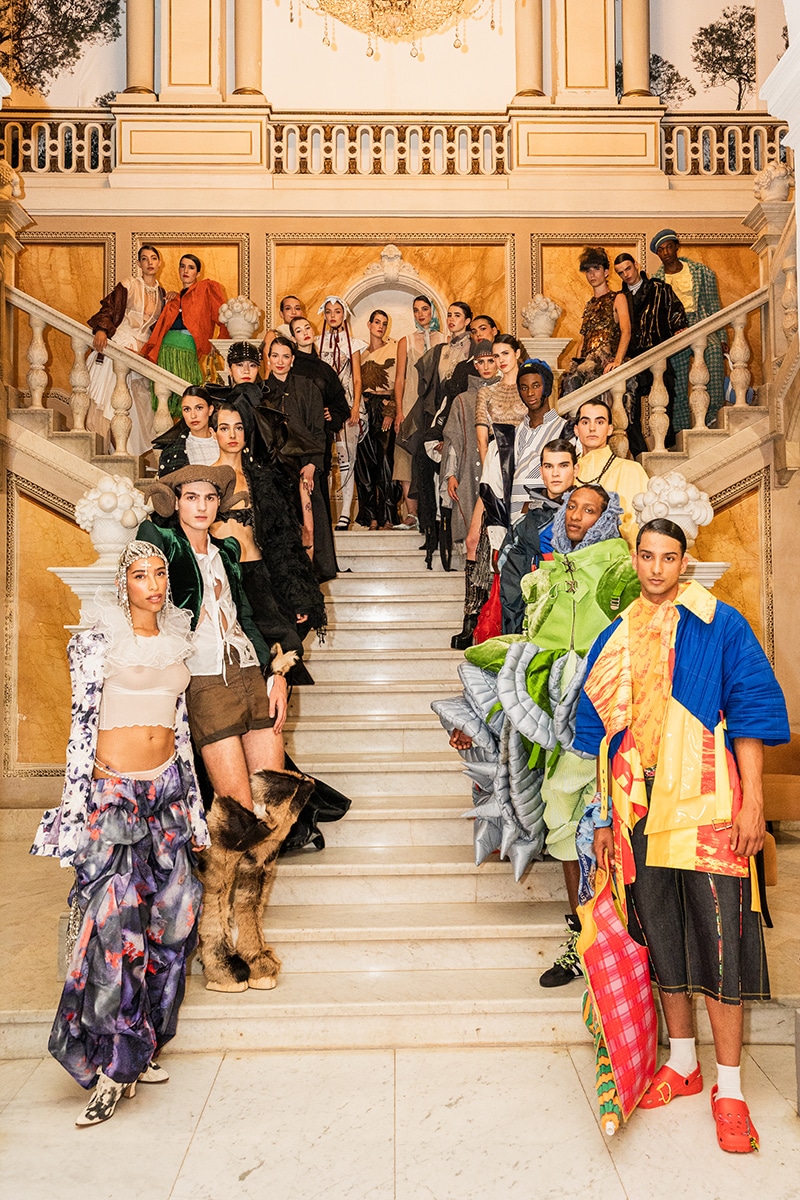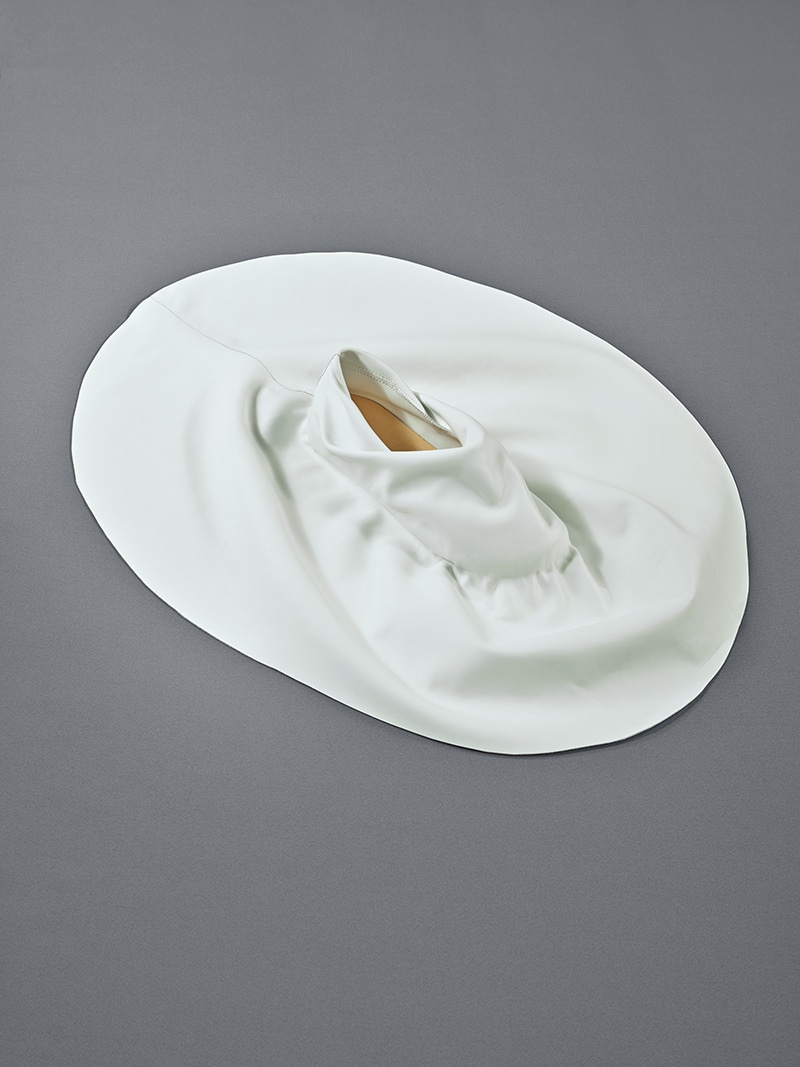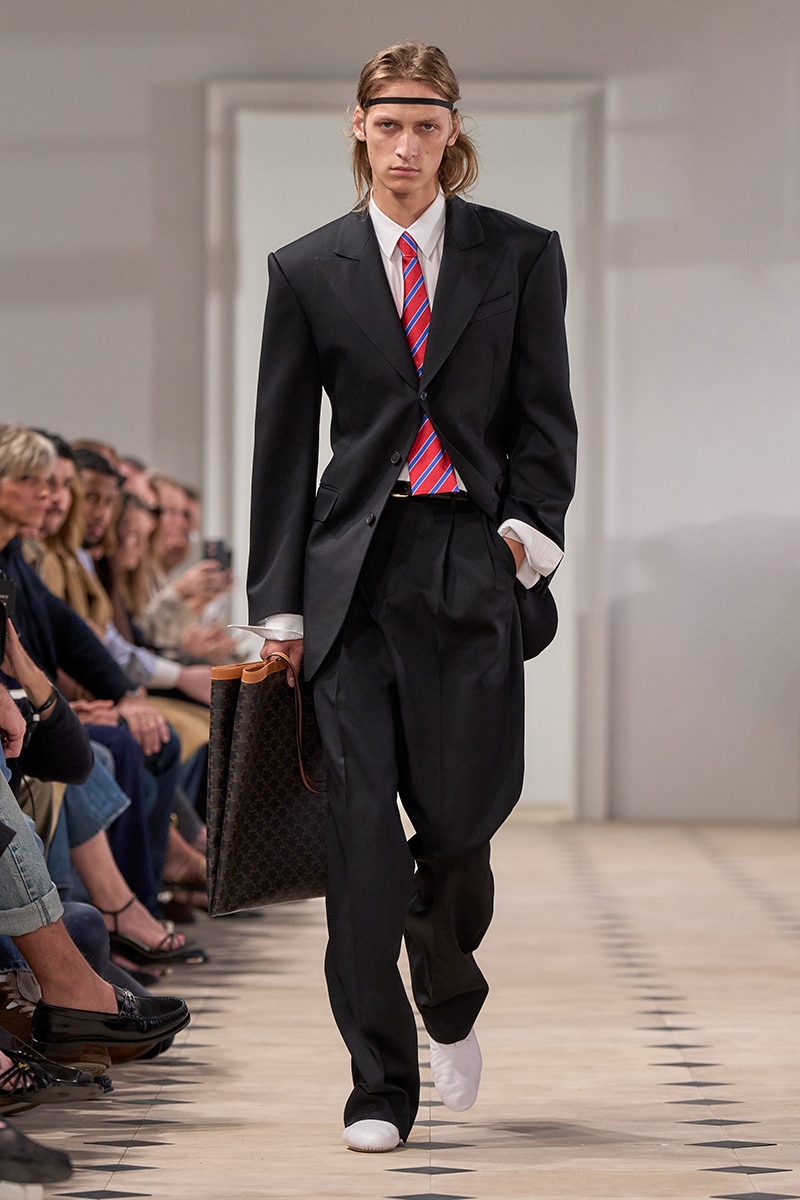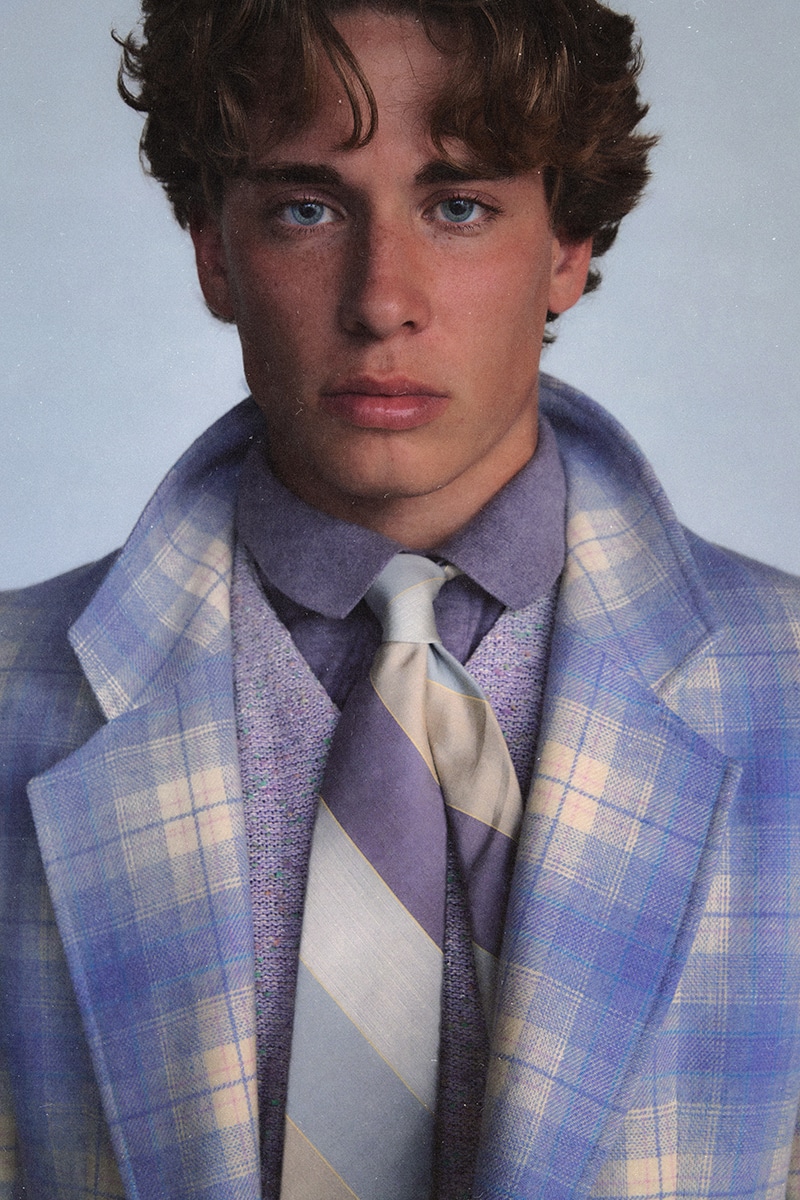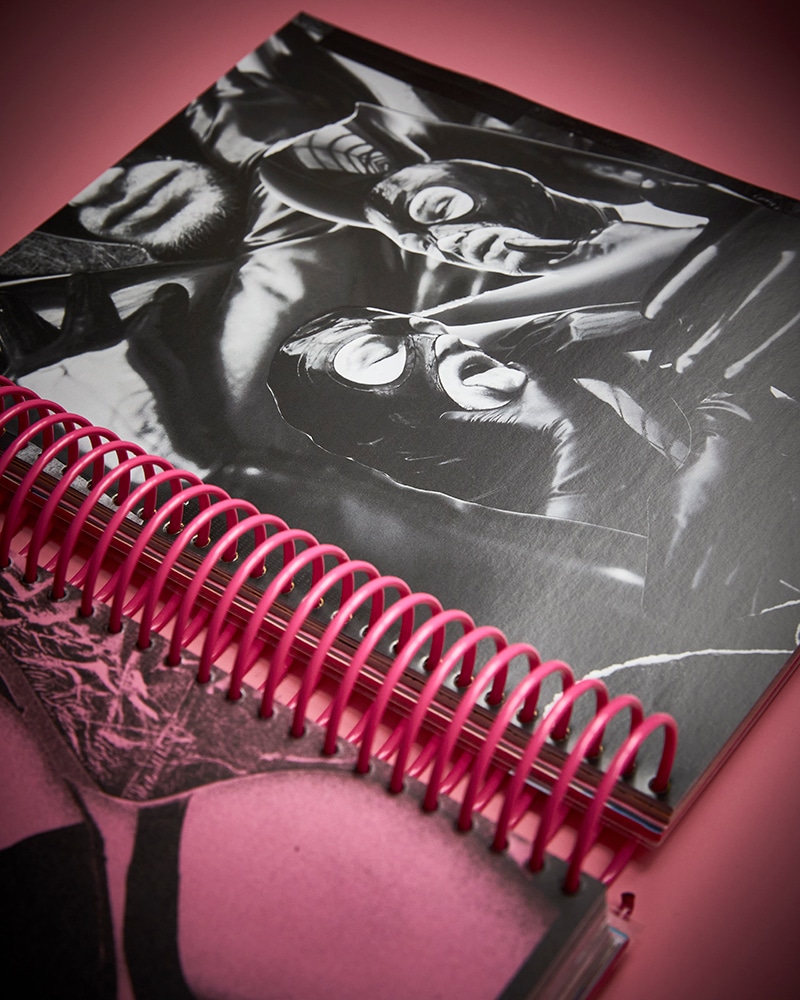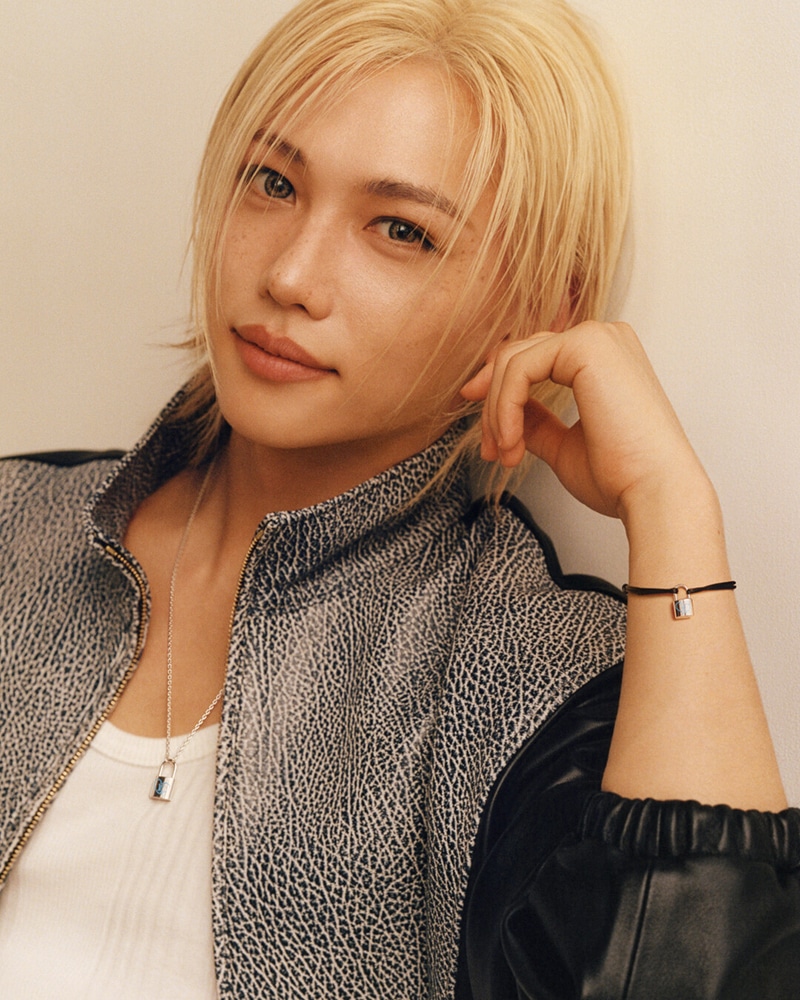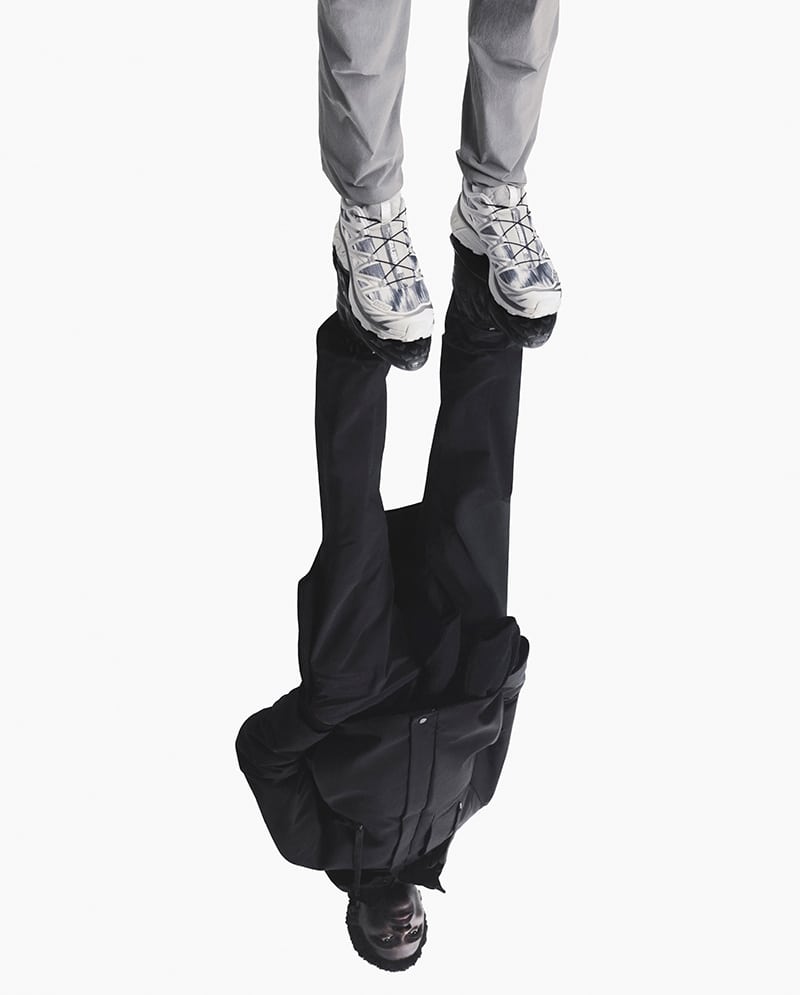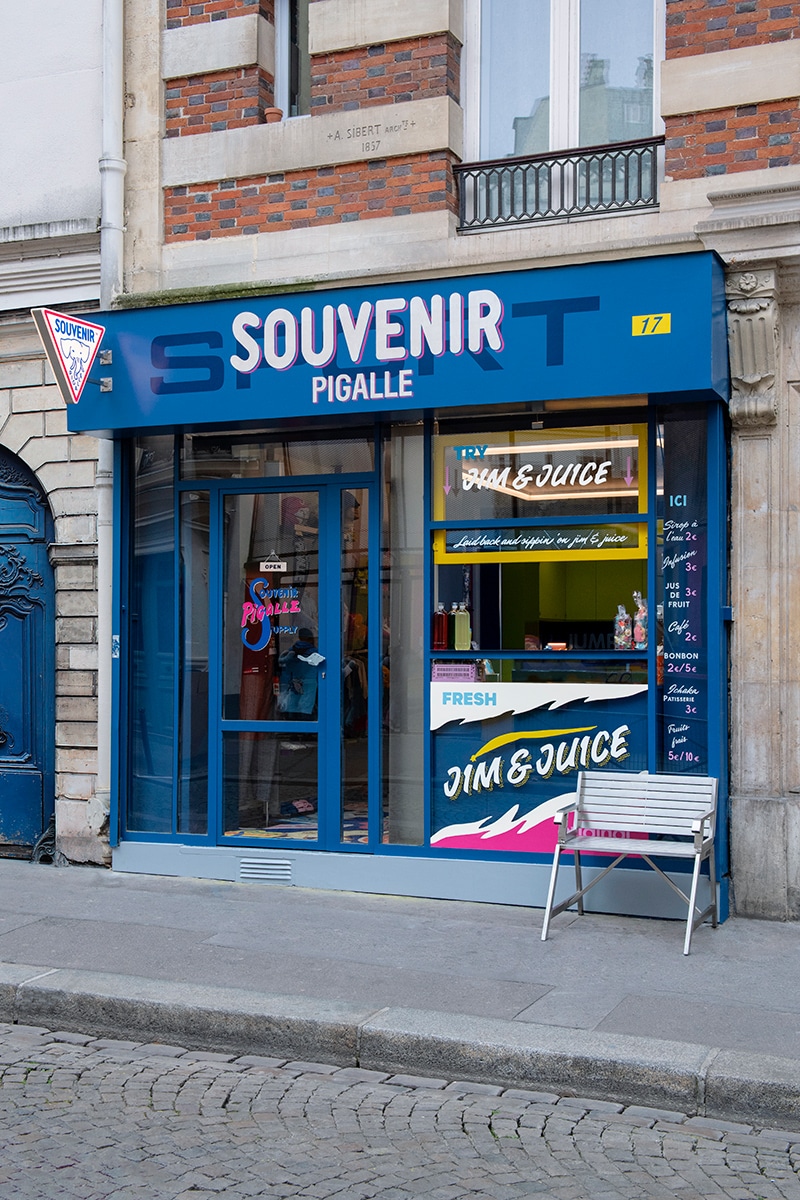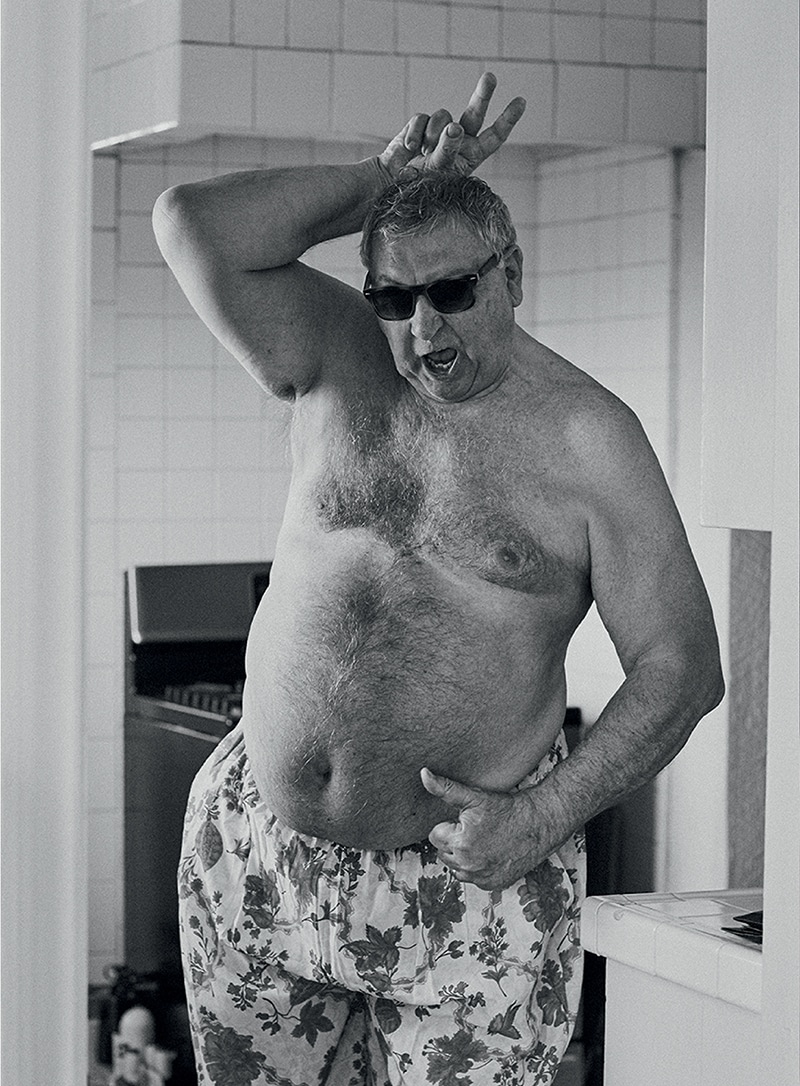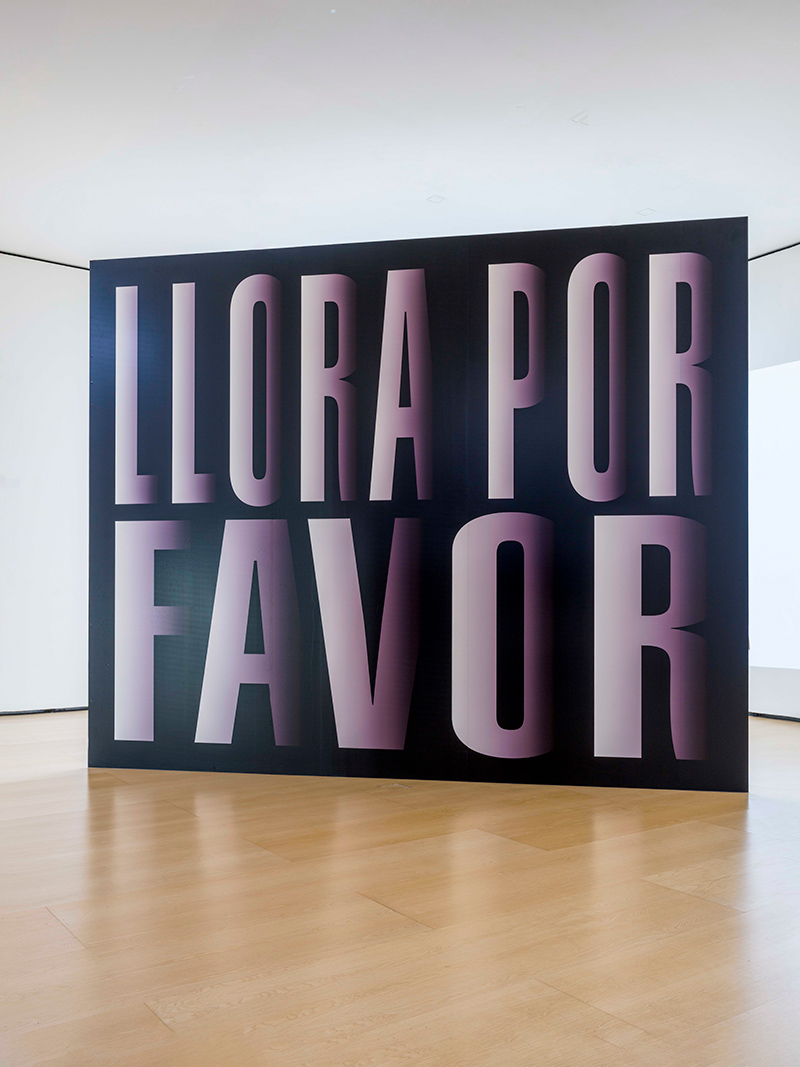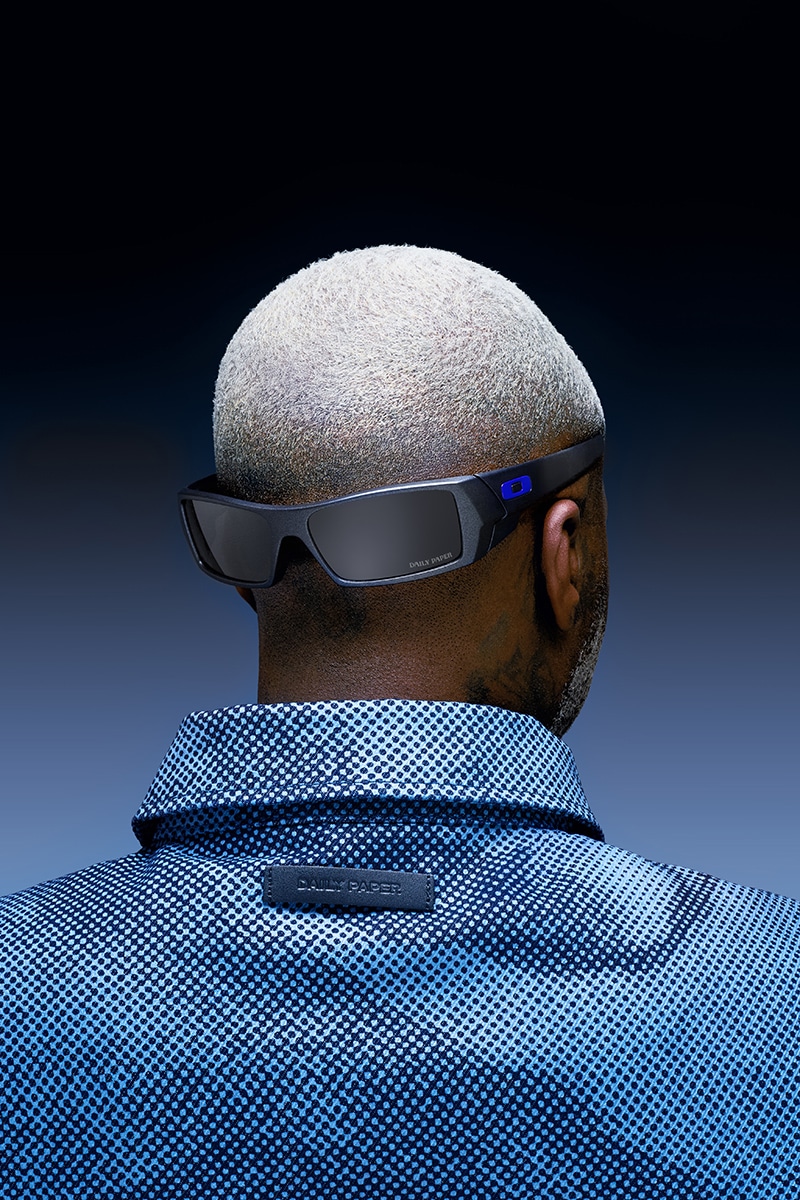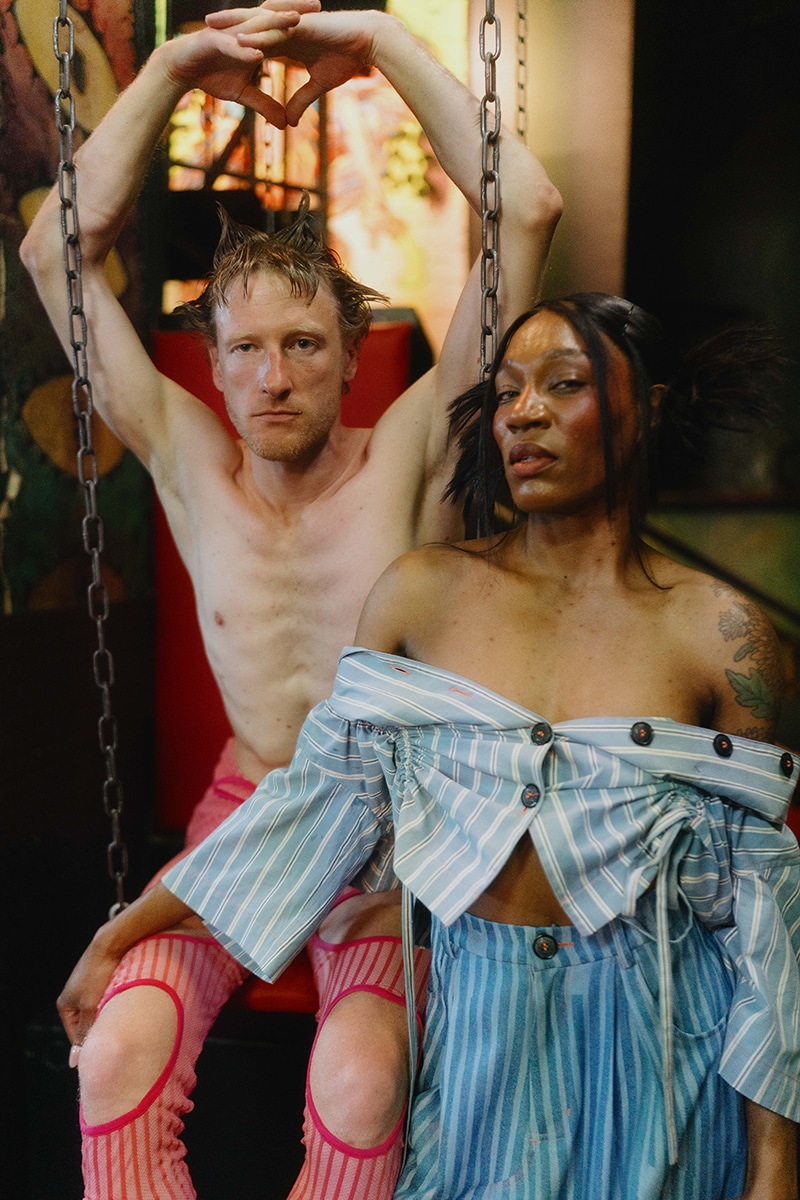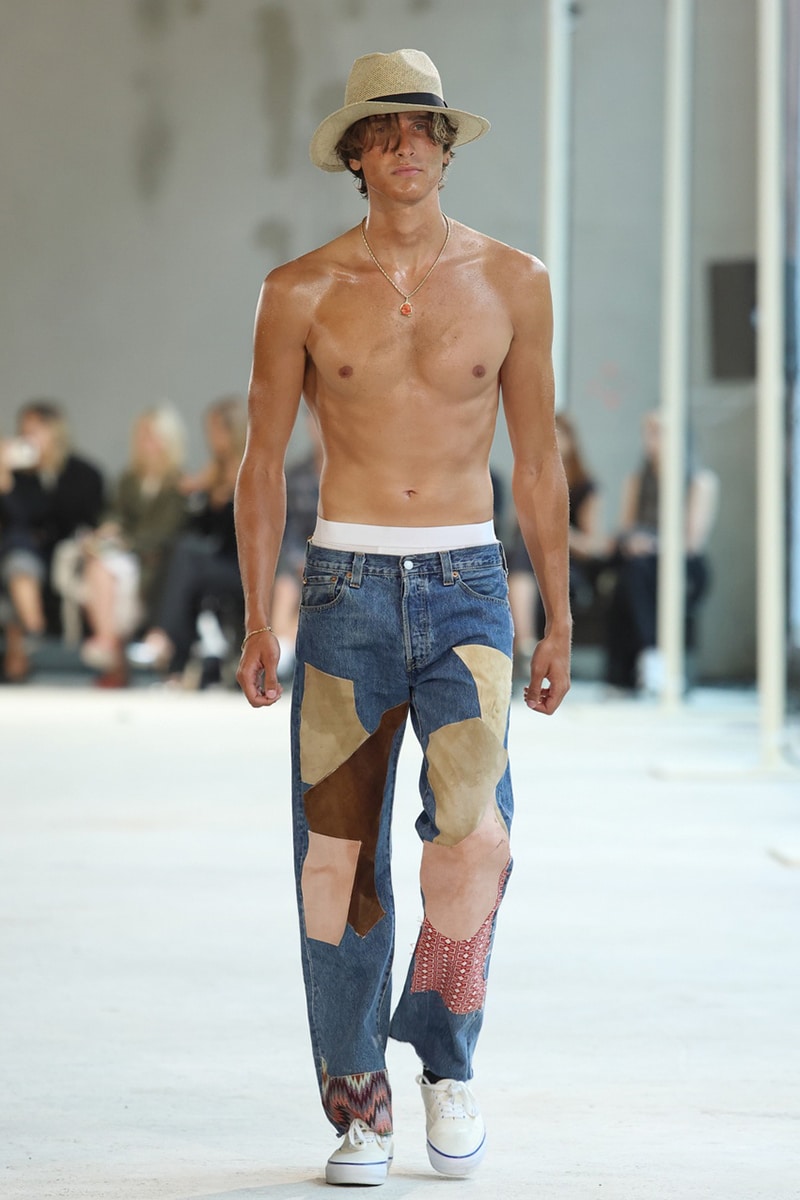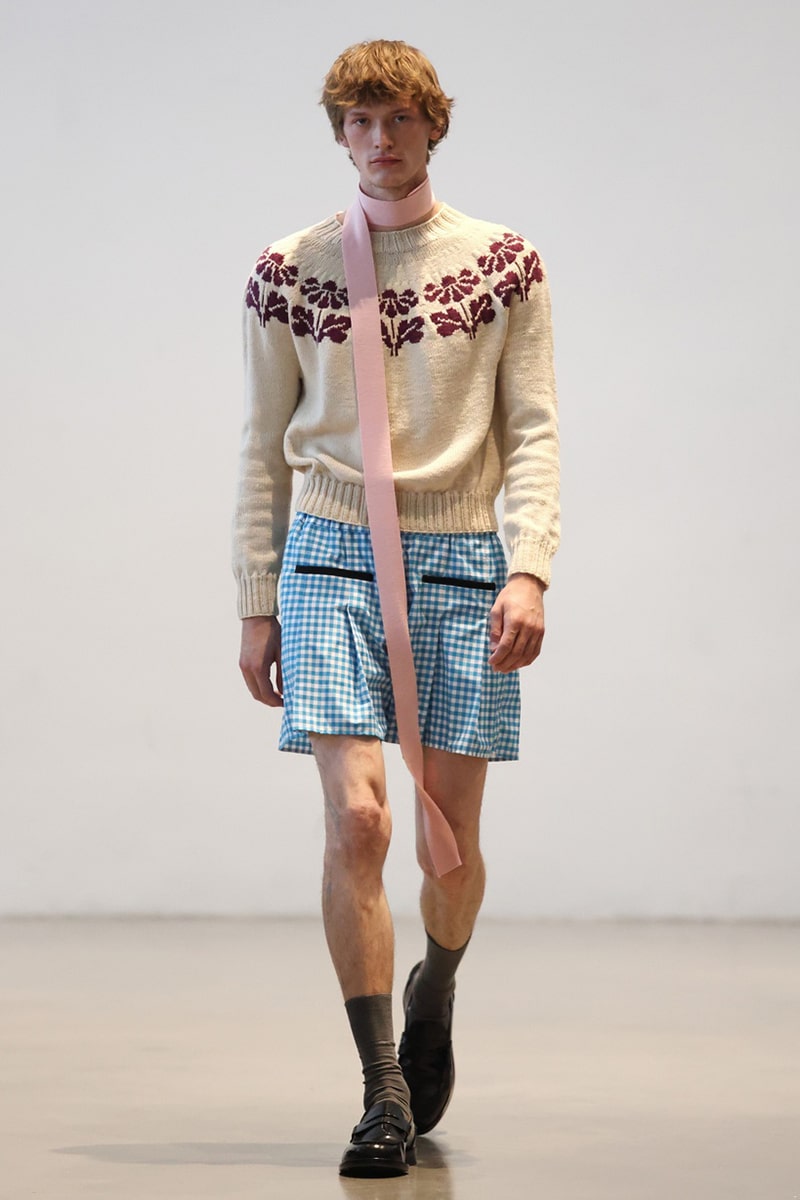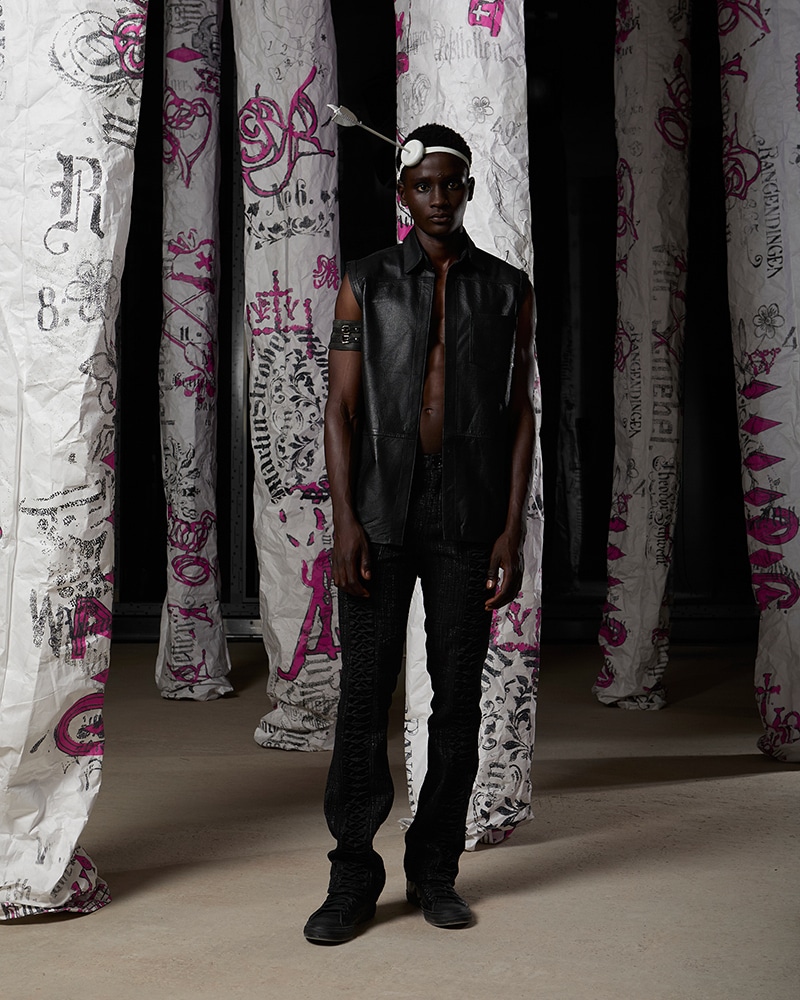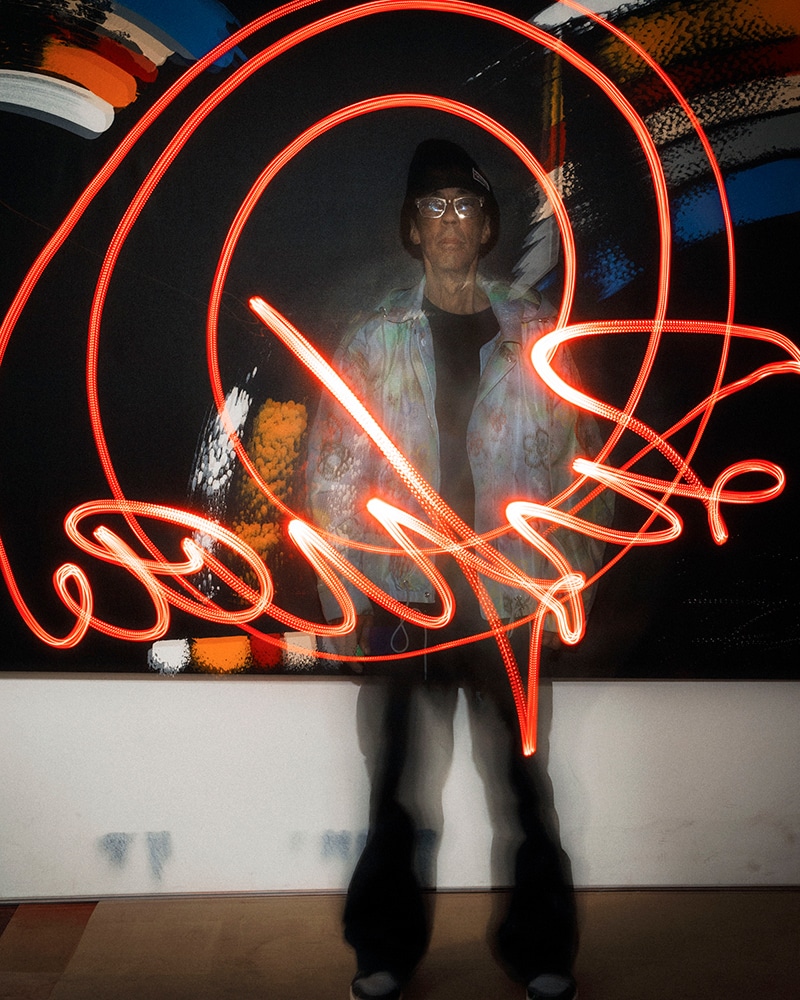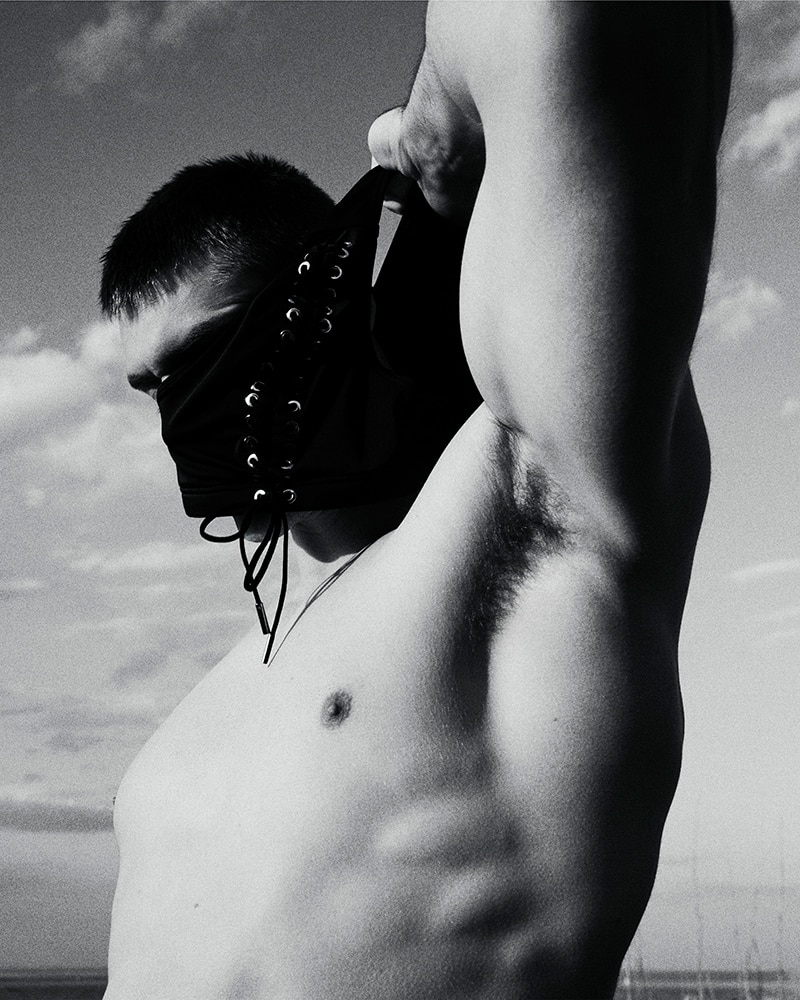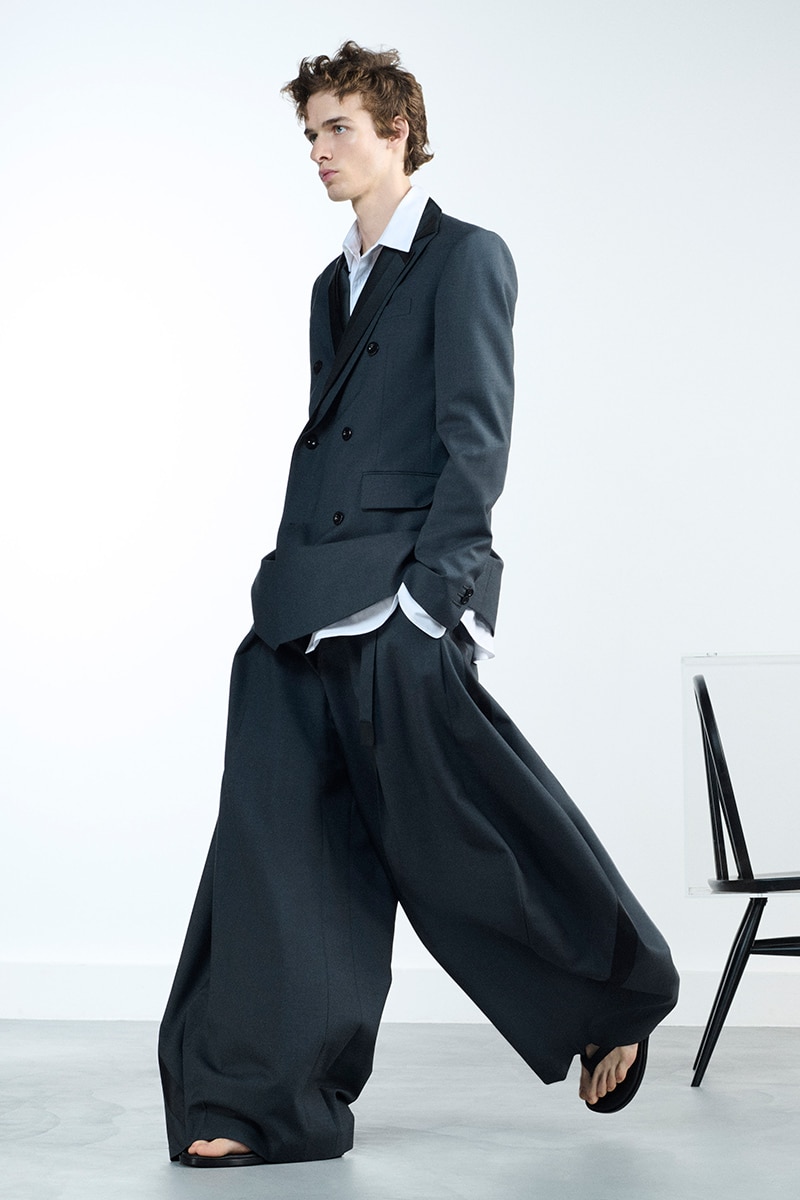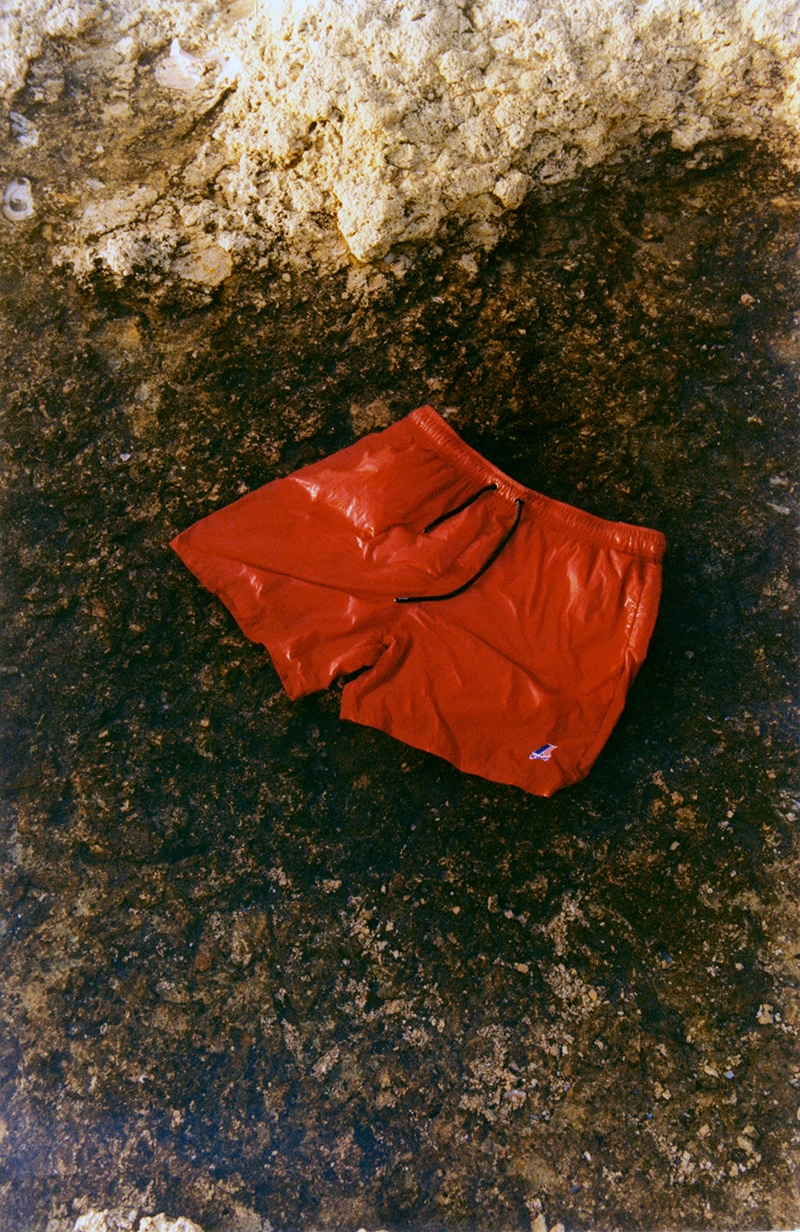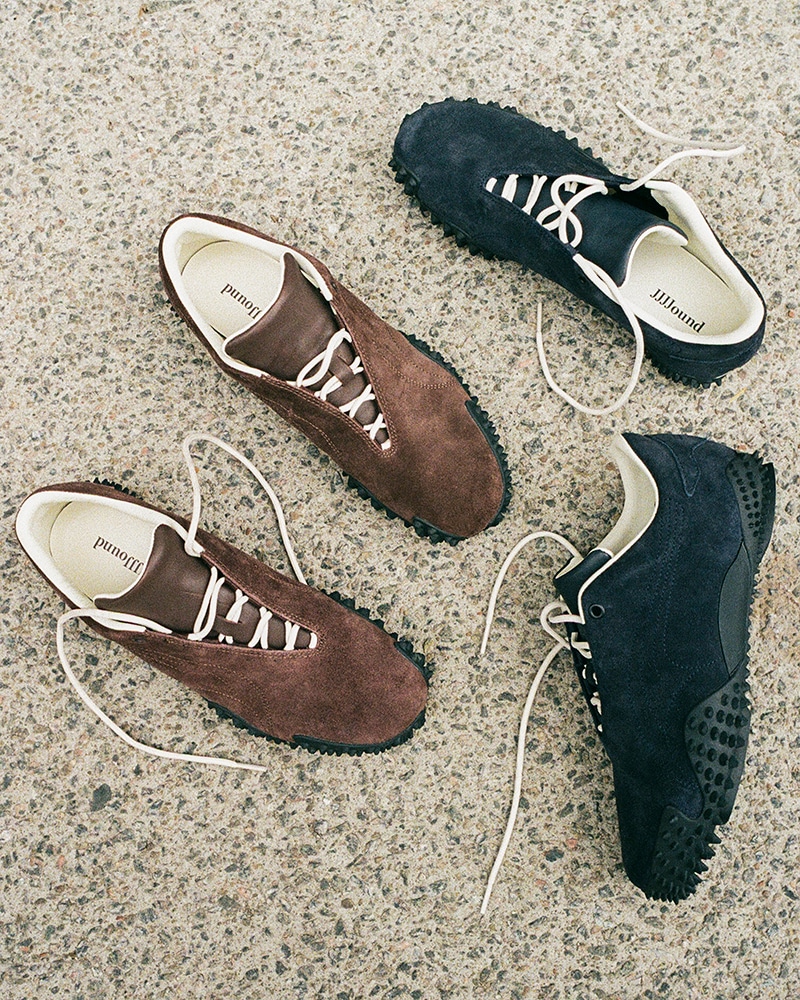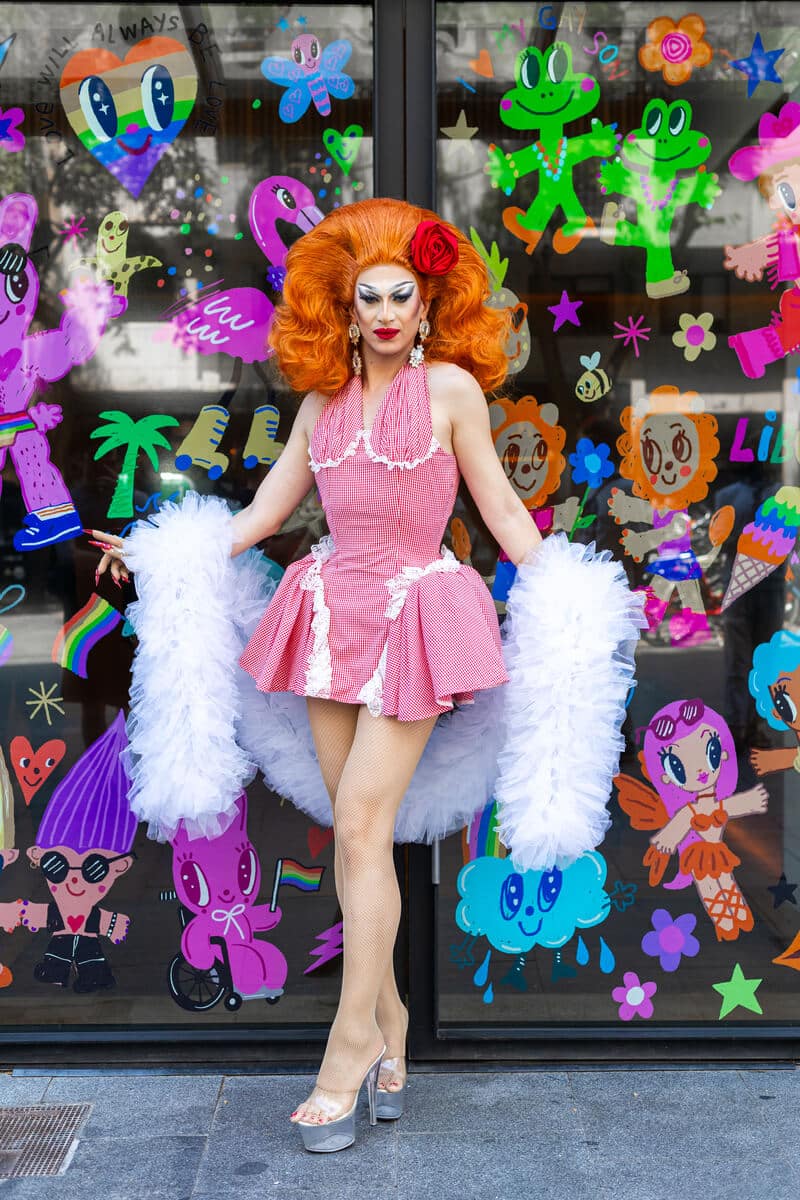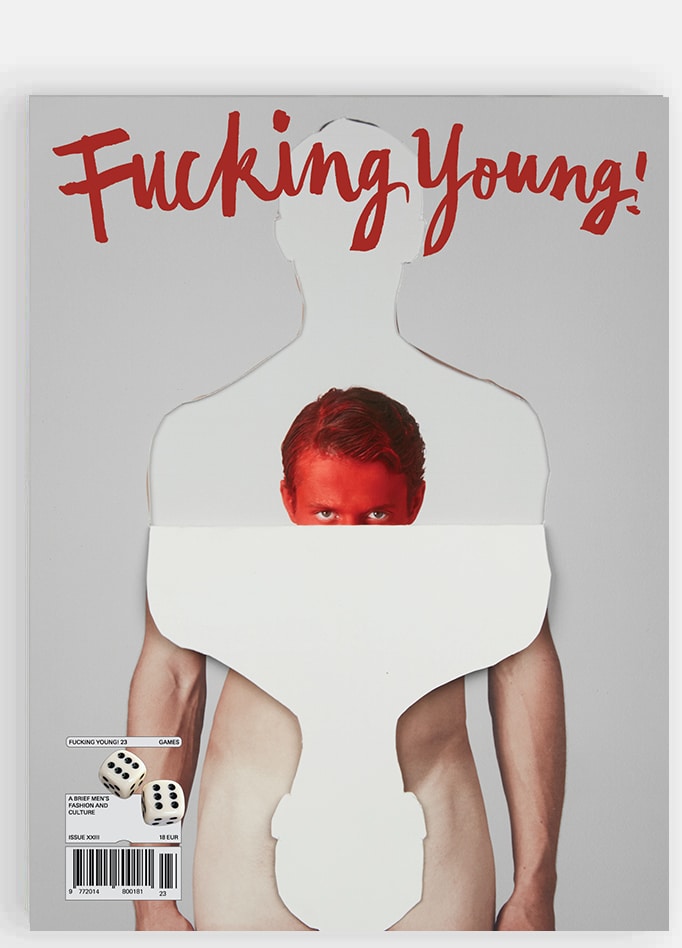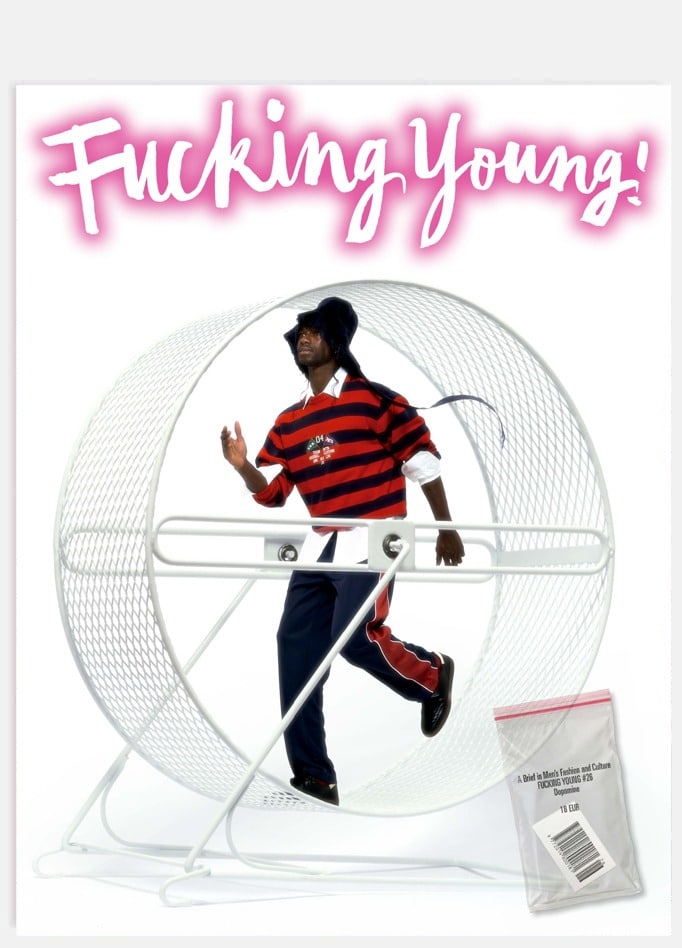House Of Jaffa is a genderless brand based between Jaffa & London. We got to catch up with the brand and have a peek at their upcoming collection back in January at London Show Rooms before showing their collection at TLV Fashion Week. The collection dealt with subtle tensions between romantic desert-toned Middle Eastern motifs and social toxicity surrounding gender and queerness. Show make-up featured models with black eyes, bruised and cut symbolizing a struggle and declaring: “We will be heard”.

Made up of design duo Golan and Eddie, they infuse their own traditional Middle Eastern and Mediterranean backgrounds through the use of symbols, aesthetics, and traditional craftsmanship into a modern expressive, and unapologetic wardrobe. After successful careers in London, their career move might equally be seen as unapologetic, but out of that comes a new vision without borders.
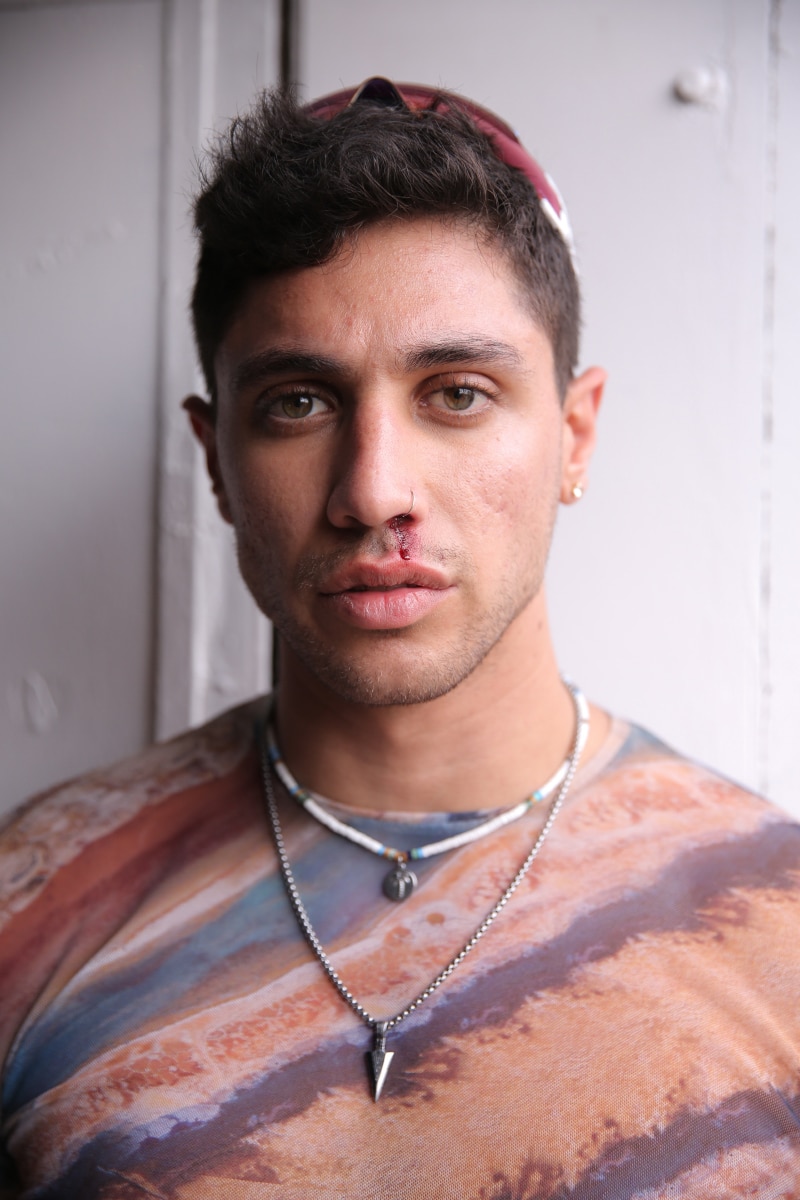
Let’s start at the beginning, how did you meet?
Golan: We met in London at a party at Dalston Superstore just four months before the pandemic. And had our first date the next day, the funny part was that our lives were so parallel for so many years, we both went to the same Uni (Istituto Marangoni London) but with a two-year gap between us so we never met there. Lady Gaga bought both of our Graduation collections and both of us had our first jobs at Alexander McQueen in the textile design department and again it was always with a two-year gap. Following McQueen, I left to start my own label Fyodor Golan with my partner at the time and Eddie launched his business The Sampling Studio London. We were operating in the same industry he heard of me and I of him, yet it wasn’t in the stars to meet then. We both always believed in destiny but this chain of events that brought us together at the right time is cosmic in our eyes.

Both of you started your careers in London and were very much part of the fashion fixture there. I would imagine a natural move would be Paris, but you went for something a bit more surprising. What inspired you to relocate to Jaffa and split locations from there and London, and what hurdles did you face?
Golan: It was one of these rare moments that I let life lead me rather than my plans. When the pandemic started, I felt I needed some distance from London- a new chapter. I started with a visit back home and was mesmerized by the climate, beaches, food, and nightlife scene and just decided to stay. After sharing all of this with Eddie it became clear that we wanted to move in with each other and do big things together.
Eddie: I still have my business back in the UK. I work with leading British fashion brands as well as support young talent we develop collections from pattern to production, relocating was never an option but the pandemic showed me an alternative way of living and how everything is manageable. Also, life in Jaffa is so different I couldn’t say no to it. It’s warm, beautiful, with amazing beaches and so culturally diverse that I found it so inspiring. It’s still very close to Europe so we travel back and forth very often. Also, our key point of sale is now Selfridges in London so that also increased our travels.

How do you approach being split between two locations when it comes to manufacturing?
Eddie: We Design everything in Jaffa, the inspiration comes from here. And it’s important for us to create out of experience. The development, pattern cutting, and sampling all happen in my studio in London as that is anyway the service I give to other brands, and the manufacturing is all done in Europe in a factory Golan has developed over his years with his previous brand so the quality is fantastic and we get to work with people we have a long-term relationship. People that understand us and whom we can trust. It does mean a lot of traveling but it’s worth it. Also supporting local craftsmanship wherever we operate gives a great meaning to all this.

Do you consider sustainability during your design process?
Of course! we have discovered very early Kornit Digital that is creating a sustainable revolution in fabric printing and we have partnered with them from the beginning. Our brand has a resort spirit, and Mediterranean vibes mixed with the cultural context of the middle east so as you can imagine it is both print and embroidery-heavy. For the printing process to be zero water waste and zero chemicals used is insane and allows us to be as creative as we want without feeling wasteful. The final result is also overwhelming. The fabrics come out vibrant and very true to our design and process.
When I think of the Eastern Mediterranean, I immediately think of embroidery, beading, and bridal before I think of menswear. House of Jaffa doesn’t shy from exploring being Queer in the Middle East. How would you describe the fashion scene and what role do you see for menswear?
We think the next big thing to be coming out of the Middle East is menswear. Somehow the tradition of embroideries and bold colors are on their own a statement of queerness somehow but when pairing all of this with modern silhouettes it creates a wardrobe that is truly new and we feel has been missing in the fashion market. The fact that the near and far east catered mostly for evening and bridal fashion I feel was almost a submission to the greater powers at play in the industry. It’s defiantly time for some new voices to change all of that and bring other sides of these cultures to center stage.

Mediterranean sun, the souk, conceptions of masculinity. You have got quite a specific aesthetic. What else influences you?
We explore being queer in the Middle East because that’s what we are. The authentic notion of digesting a personal daily experience into a visual product is something people from all over the world identify with and the brand is selling globally to the coolest crowd ever. Sexuality plays an important part as you can imagine there is a constant tension in these parts between being out and proud of who you are and between knowing that you cannot take these freedoms for granted these notions push the entire community to develop insane underground scenes and nightlife that I’ve never seen anywhere else and that is the core of our inspiration, the boldness of it all.

How do you feel your work has evolved in the past few years? Was it more about refining your vision?
Golan: The Years we had as a break from the industry and the space Covid allowed us to take, kind of made us look at fashion in an easier, fresher way. To realize that it’s a tool for life and not the other way around. House Of Jaffa came to be, once we started prioritizing ourselves and our lifestyle and realized our wardrobe no longer suited a more spontaneous free spirit. We wanted to bring our vision to life in a way that will balance being respectful to our references, rebellious towards the establishment, easy and fun to wear, and transcend cultures and territories- kind of act as a bridge and build a community.
Eddie: The most incredible part is that it’s working. We have very involved clients and followers from all over the world people contact us just to say how they are moved by the work or how they feel their best when wearing the collections.

What would you say are the iconic pieces that make up the DNA of House of Jaffa?
Mesh oversized shirts with hand embroideries of Hamsa or Palm trees or brightly printed co-ords with scenes of cactuses, desert, and sea.
Is there anyone you would love to dress?
Lil Nas, Manu Rios, Zendaya, Mahmood

Are you someone that takes risks?
Golan: Absolutely! When I closed Fyodor Golan, everyone said I was mad, we were selling globally and worked with so many pop icons from Madonna to Rihanna but it just felt like I need a new challenge and a fresh chapter. When Eddie moved to Jaffa for Love everyone told him he can’t just leave a successful business and run it remotely but if we believe in something we make it work.
If we were at your atelier during the creative process, what would be on your playlist?
We recently discovered Liraz Charchi. She is an amazing Israeli-Iranian singer that sings in Persian with a 70’s vibe but in a very fresh new twist. She is so powerful that her voice became synonymous with the women’s rights movement in Iran. We were shocked to discover that she is our neighbor and after just one meeting she performed in our last catwalk show, now we are designing her tour outfits so that’s our current obsession.

Finally, what else are you looking forward to this year?
Last year was all about launching House Of Jaffa. This year it is all about developing it as a business and expanding our reach. We already launched the collection at Selfridges London and Zalando online and we are working with a few very exciting key global partners, as well as taking part in major events but we can’t share much of it yet. Oh Yeah and finally taking a proper holiday between all that.

